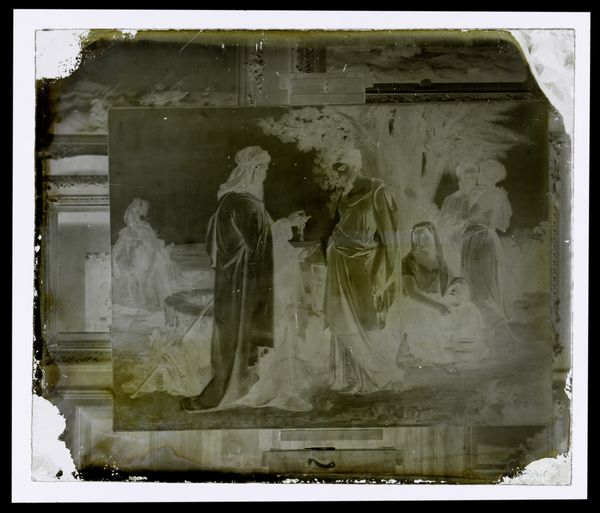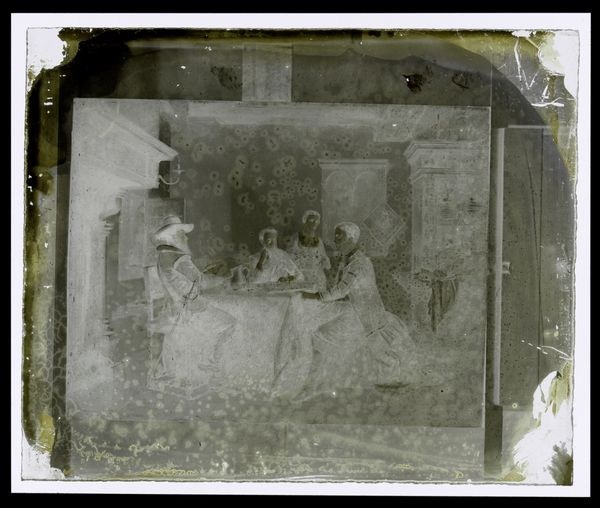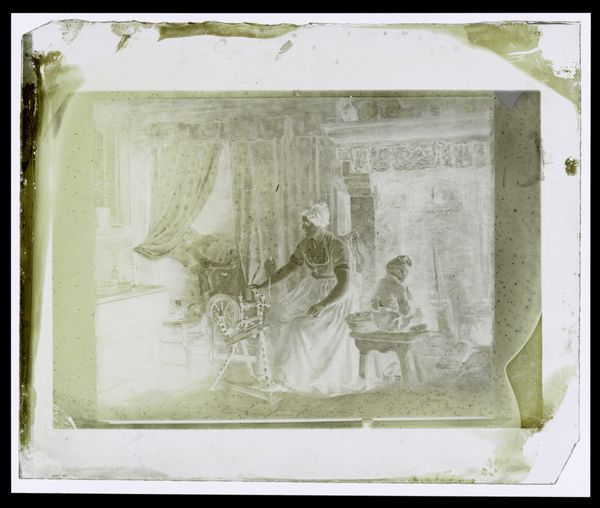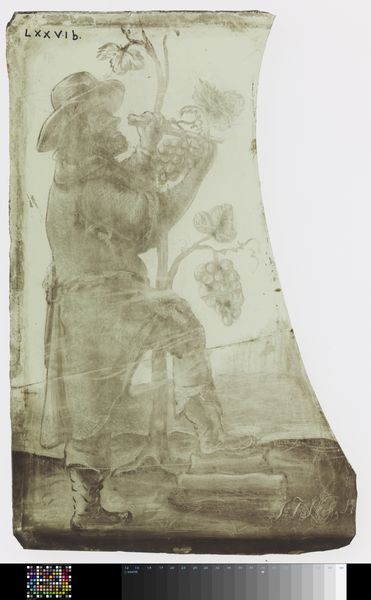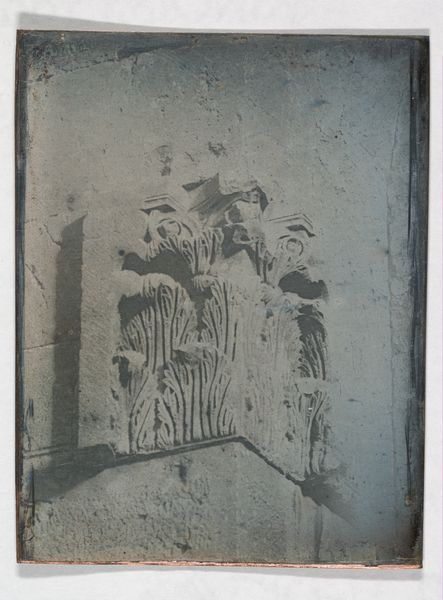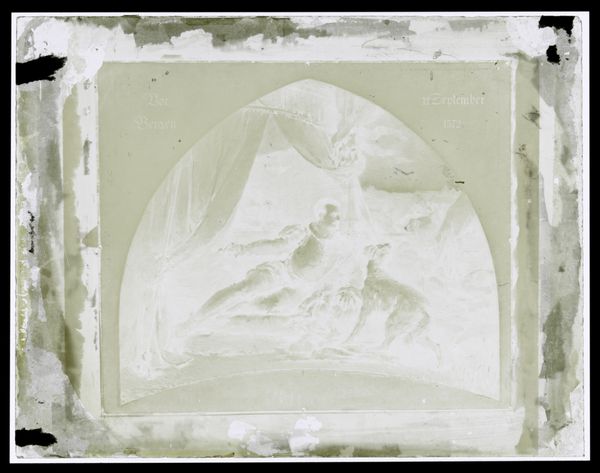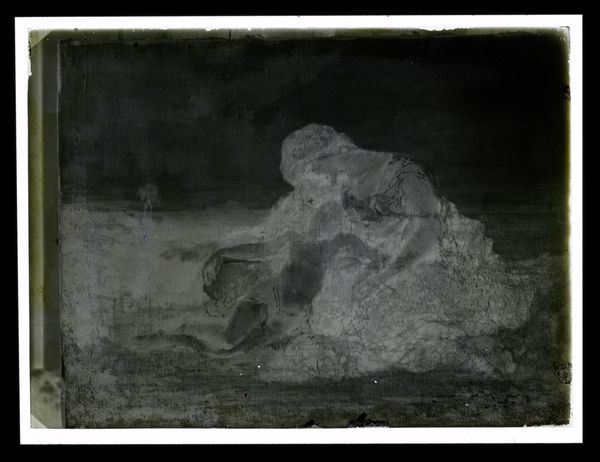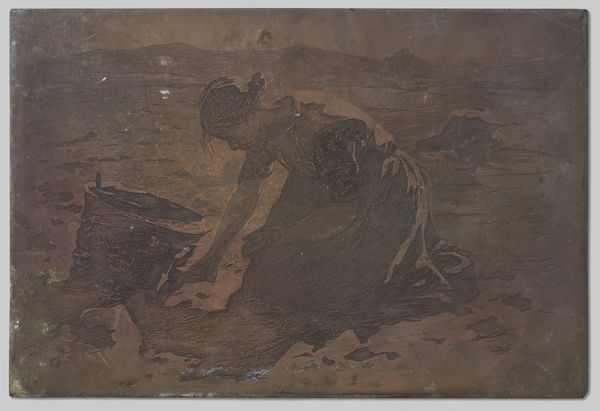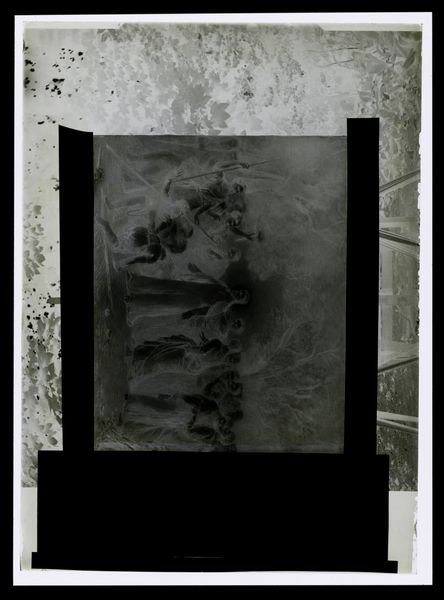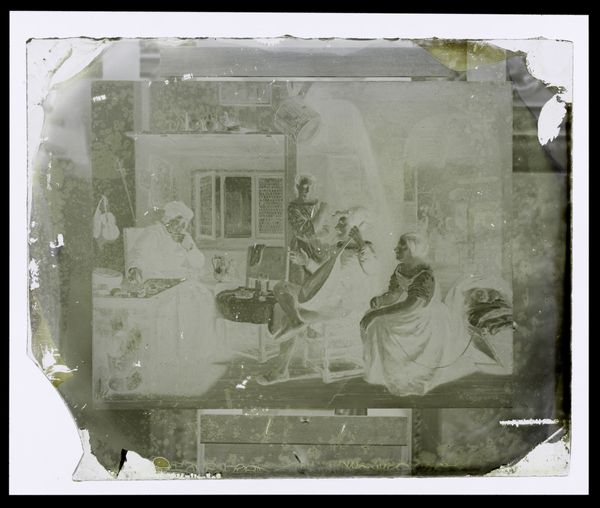
Fotoreproductie van een schilderij van een groep mensen bij een waterput c. 1865 - 1900
0:00
0:00
Dimensions: height 154 mm, width 187 mm
Copyright: Rijks Museum: Open Domain
Editor: Here we have a reproduction of a painting dating from 1865 to 1900, a gelatin silver print showcasing a group of people near a well. Its hazy, almost dreamlike quality gives it an air of solemnity. What formal elements strike you the most? Curator: The composition, above all else, is of interest. Observe the strategic arrangement of figures, directing the viewer’s gaze through the pictorial space. Light and shadow are not merely descriptive; they become structural elements defining form. Editor: So, it's more about how it's put together than what it represents? Curator: Precisely. Note the artist's considered use of line and form; these components are engaged in a dialogue that constitutes the artwork's essence. Editor: The figures are arranged around a light area near the well. What would you say about it? Curator: That bright zone certainly serves as a focal point, acting almost as an aperture through which we perceive the narrative elements within. The disposition of bodies around the well orchestrates visual rhythm. Editor: The photograph captures a painterly quality, a soft focus which affects the perceived depth. How do you read that? Curator: It invites contemplation on the nature of representation itself. Is it the indexical function of photography at play, or is it an intentional blurring of boundaries to emphasize form over content? What are your thoughts? Editor: That's a complex thought, indeed. Thanks to your reading I’m now more conscious of the composition and its different levels. Curator: And I’m grateful for your curiosity about it. Close looking reveals fresh insights each time, isn't it?
Comments
No comments
Be the first to comment and join the conversation on the ultimate creative platform.
